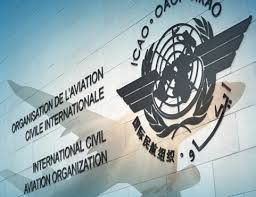The International Civil Aviation Organization (ICAO) has published a request for information for States, industry, academia and other interested stakeholders to help fill in critical gaps in UTM services, with successful submissions presented in the Drone Enable 4 conference later this year.
“As the concept of UTM matures, systems providing initial levels of capability start emerging, and the demand for airspace access continues to grow, it is important to address specific challenges that must be resolved in order to realize a harmonized, safe and effective UTM system implementation. As such, like their manned aircraft and ATM counterparts, UAS and UTM systems will soon need to address problems such as determining: the performance requirements of the UTM system and the unmanned aircraft that are managed by such systems; how UTM systems will demonstrate and achieve a level of confidence normally associated with certified aviation systems; and how UTM will be effectively integrated into aerodrome environments and activities…The primary requirement remains to facilitate such integration without negatively impacting the safety of manned aviation operations or the safety of persons and property on the ground, taking into account security and equal accessibility for all airspace users.
Submissions covering the following areas are requested:
- a) UA Performance Requirements in a UTM Environment – Unmanned aircraft performance
requirements should be derived from performance objectives, metrics and indicators in order
to meet expectations regarding safety, security, access and equity, environmental protection,
efficiency, interoperability and cost-effectiveness.
- What are the performance requirements to be considered for UA in UTM?
- Is standardization of such performance requirements needed in order to safely, effectively
and efficiently manage UAS traffic in a UTM environment (e.g. relating to UA
communication, navigation and surveillance (CNS) systems or other systems)?
- Could there be different UA CNS-related performance requirements, based on airspace?
For example, the specific airspace or UTM service volumes in which a UA is operating or
in proximity to other airspace users. If so, which criteria should be used to apply the
performance requirements? Such performance requirements could also be applicable to
other systems, beyond purely CNS.
- How would standardized common vertical position (altitude/height), lateral position and
temporal reference be achieved? What would be the accuracy and latency requirements of
such systems and how would these requirements be certified?
- b) UTM System Certification Requirements – Given the nature of the planned/projected
initial capability of UTM, UTM systems may have to demonstrate and achieve a level of
confidence normally found in certified aviation systems. However, it is not necessarily the
case that this needs to be done using the existing, established industry standards which may
be viewed as excessive or unnecessary for the intended function of UTM.
- Are industry standards on UTM system certification currently under development and, if
so, who is developing them (e.g. ASTM, EUROCAE, ISO, RTCA, SAE, etc.)? What
criteria or services are being addressed in these standards?
- How will UTM system developers demonstrate compliance to standards? What, if any,
artefacts/means of compliance will be required by State regulatory authorities?
- To what extent will UTM system hardware/software be required to comply with
certification requirements? If full compliance is not required, how will the system be
shown to meet a target level of safety?
- How would upgrades/modifications to UTM components or systems be implemented in
order to maintain the certification basis?
- If a UTM system is not required to be certified or does not rely on existing ATM
standards for system development, and instead complies with a less rigorous standard,
how would interoperability with ATM systems be accomplished?
- c) UTM Integration into Aerodrome Environments/Activities – UA may operate adjacent to
or at aerodromes and blend with conventional aircraft operations. This includes controlled
airports, uncontrolled airports and/or heliports and addresses air and land-side operations both
on the ground and in the air. It is essential that the risks, issues and challenges of UTM/ATM
interaction within the airport environment be clearly understood and addressed for the
industry to move forward. With an increased need for airport connectivity (i.e. passenger,
cargo, urban air mobility, etc.), it is important to identify and understand the roles of various
stakeholders in the entire eco system. Please note that it is not the intent of this problem
statement to address Counter-UAS initiatives or capabilities.
- Assuming that UTM operations will be integrated within some aerodrome environments
(i.e. controlled or uncontrolled), what types of UTM related aerodromes operations and
use cases are anticipated?
- For UTM operations in and around aerodromes, how would such UTM operations be
managed and what key areas/issues would need to be addressed when integrating UTM
into an aerodrome environment?
- Who are the key stakeholders to participate in UTM integration at the aerodrome and
what will be their roles and responsibilities?
- How would integration of UTM-managed traffic affect air-side/land-side operations at an
aerodrome? How would UTM-managed traffic be integrated into the traffic flow, both in
the air and on the ground?
- In an airport or heliport context, how would the applicability of ATM and UTM services
be determined (i.e. who would provide which services)? Would UA used by the airport or
heliport stakeholders (e.g. perimeter security, aerodrome or aircraft inspections,
navigation aid (NAVAID) calibration, etc.) be managed by the UTM or ATM system?
For more information
All submissions received by 17 April 2020 will be reviewed. Submitters of those proposals that are considered to best address the various problem statements will be offered the opportunity to present their information at DRONE ENABLE/4.




